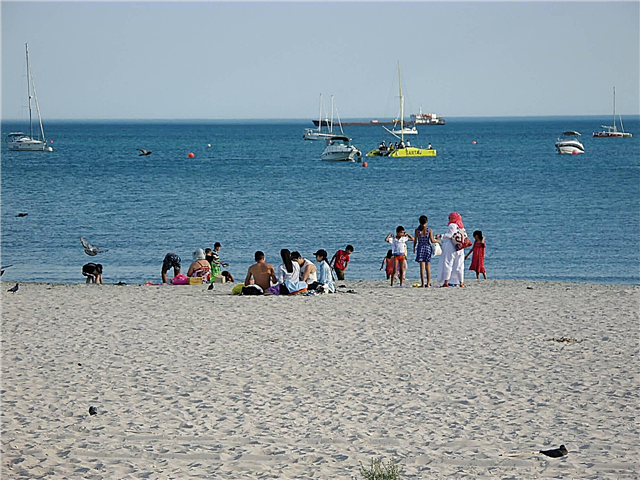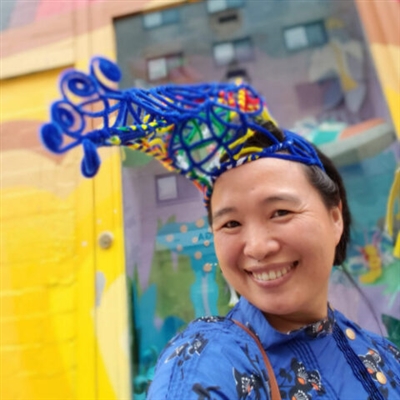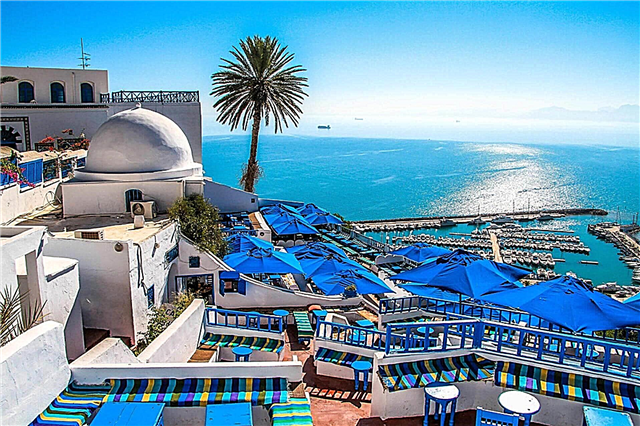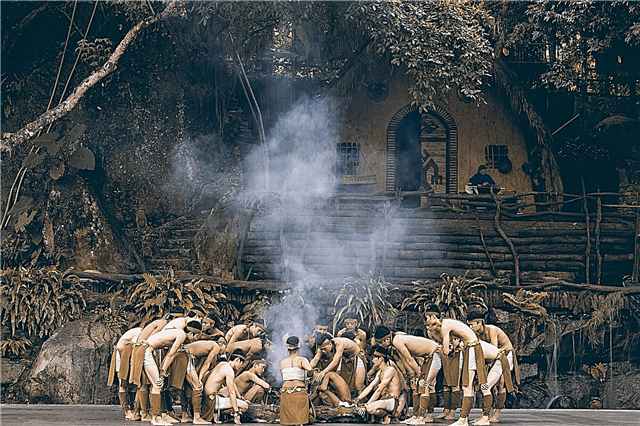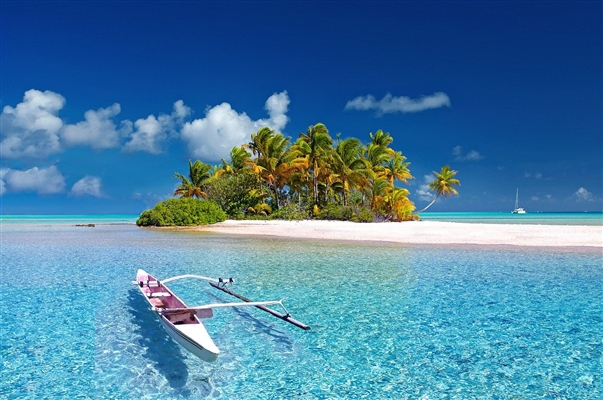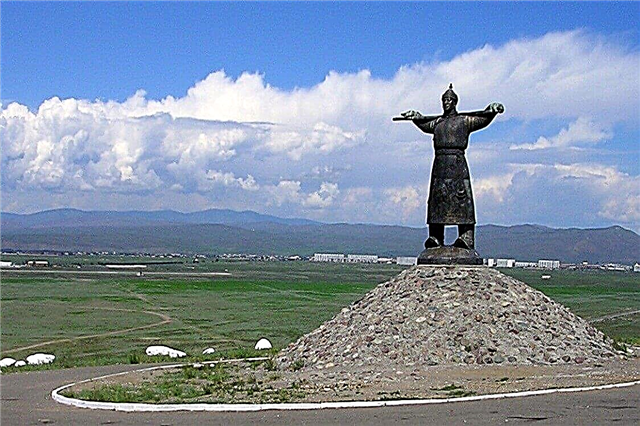The Republic of Tuva differs in many respects from central Russia, therefore the sights here are often unusual. However, this is why they are attractive. The regions of the region are called kozhuuns. There are interesting natural objects scattered along them, such as lakes, springs or mountains. There are also monuments of the past - the ruins of fortresses, statues and petroglyphs. They were left by representatives of different peoples and times.
There are many objects of culture and history in the city of Kyzyl - the capital of Tyva. These are museums, theaters, religious buildings. Especially against the general background, Buddhist shrines stand out, both built in the past and modern. Travelers can plunge into the world of new experiences on their own or use the services of a guide, of which there are plenty in the area.
The most interesting and beautiful places in Tyva
List, photos with names and descriptions of the best attractions in the region!
Fortress Por-Bazhyn
The ruins are located on the island of Lake Tere-Khol. The fortress was built in the 8th century. Now only small fragments of the walls remain. They are distinguished by the evenness of the lines and give an idea of the internal layout, which had a clear structure. Excavations and research works were carried out here. You can visit the site by air or by car with an increased cross-country ability during dry periods.

Lake Azas (Toja)
It is located in Todzha kozhuun in hard-to-reach places. The length is about 20 km, and the width varies from 5 to 7 km. There are 7 islands on the lake, the largest is Haara, 1.5 km long. In winter and most of spring, the surface is covered with ice. The main direction of tourism is fishing. There is a beaver reserve of the same name. A nearby attraction is the Irtygan plateau, where there are no trees, only basalt and stones overgrown with moss.

Obelisk "Center of Asia"
The decoration of Kyzyl is not the first attempt to make a similar indicator of the center of Asia. The previous monuments have not survived. In 1964, in honor of the 20th anniversary of the annexation of Tuvans to the USSR, a spire was installed with a pedestal and a globe on it. After the reconstruction of the embankment in 2014, the obelisk was replaced with a new one made of other materials. It is similar to the original, but supplemented by a group of fountains, stairs and more.

Ustuu-Khuree
Buddhist monastery, built in 1905, a few kilometers from Chadan. The development of the project was carried out with the participation of a Tibetan lama and Chinese masters. The systematic destruction of the monastery began in the 1930s. In the 50s, the last clergyman left Ustuu-Khuree, and the religious values were moved to the museum. By 2012, the monastery was restored. An annual music festival is held here.

Ubsunur Basin
The reserve has existed since 1993 and covers an area of over 925 thousand hectares. It is part of the UNESCO World Heritage Site of the same name along with the bordering Mongolian lands. The location in a bowl of natural origin has contributed to the creation of a unique ecosystem. Notable natural objects: freshwater lake Tore-Khol, Yamaalig mountain - a burial place of ancient peoples.
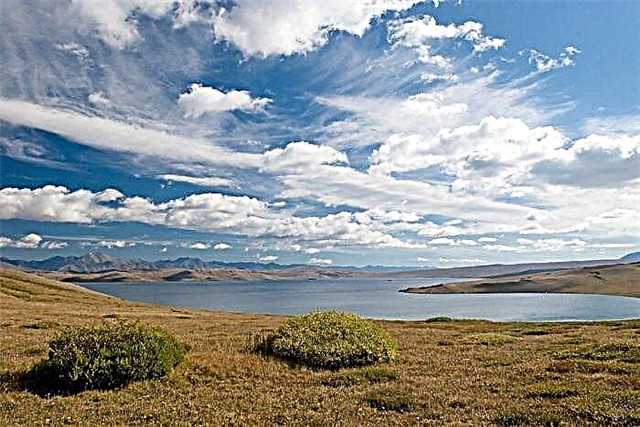
Valley of the Kings
Located in the Piy-Khem kozhuun. On a vast territory are scattered mounds - burial places of noble people. Excavations in this area have revealed amazing artifacts: weapons, jewelry, armor made of noble metal, and more. The burials date back to the dawn of the Uyuk culture. They were made before our era and still contain many unexplored secrets, so research continues.

Mongun Taiga
Mountain range in Mongun-Taiginsky kozhuun. The maximum height above sea level is 3976 m, which makes the peak the highest in Eastern Siberia. Mongun-Taiga was formed at the end of the Ice Age. What became clear after the study of glaciers and stone deposits. At the foot of the mountain lies Hindiktig-Khol - a lake with two mountainous islets in the middle, which is why it is called "a lake with a navel".

Choigan

Mugur-Sargol tract
An ancient sanctuary, famous for the petroglyphs that are left on its walls. Drawings were discovered in the middle of the last century. Images of animals and other paintings are carved into the stones. Since the tract is now flooded due to the construction of a hydroelectric power station, all important objects were transferred to the Institute for Humanitarian Research in Kyzyl. Tourists can access them in the courtyard of the research center.

Tsechenling Temple
One of the most important Buddhist sights of Kyzyl. Built in 1998, it consists of two floors: the first is as a residence, the second is for prayer. The corners of the building look more worn out, this is due to the tradition of going around the temple in a circle and touching the corners. Inside there are classes in spiritual practices and languages, admission is free, donations are welcome.

Prayer drum in Kyzyl
Officially opened in 2006. It is considered the largest in Russia. Installed on the square in front of the Music and Drama Theater. Came from an Indian monastery, where they worked on the drum for several years. Inside are millions of mantra scrolls. On the outside it is covered with hieroglyphs. A pagoda was built over it according to all the rules of feng shui. The composition is made in the same style.

Mount Kezhege
Belongs to the territory of Erzin kozhuun. The massif resembles an incompletely closed ring, to which it owes its name: this was the name of the hairstyle of the ancient Tuvans, who wore something like braids on their heads. Many legends and traditions are associated with Kezhege, the area is suitable for rituals, here shamans draw strength. Tourists love to wander inside and take photos in the crevice. There are ruins of Buddhist temples nearby.

Mount Hayyrakan
It is located in the Ulug-Khem kozhuun and is depicted on its coat of arms. The absolute height is over a thousand meters. It belongs to the number of sacred Tuvan sites for both shamans and Buddhists. Consecrated by the XIV Dalai Lama. There are several versions of the origin of the name, including due to the external resemblance to a bear drinking water. Most of the sightseeing tours around the republic include a visit to the mountain.

Kizhi-kozhee
Massive stone sculptures are located in the Barun-Khemchik kozhuun. They represent warriors who hold ritual vessels in their hands. In total, there are about 200 such samples of ancient sculpture in the district. Some are especially revered and are the subject of worship. The most famous statue is located at the foot of the Bizhiktig-Khaya massif. It is estimated by researchers to be about 1200 years old.

Museum of the History of Political Repression in Tuva
Opened in Kyzyl in 1994. It appeared thanks to the efforts of the "Memorial" society, which collects data on victims of political repression. The goal is not only to preserve the memory of the terrible pages of the history of Russia, but also to investigate the causes of such phenomena in order to prevent their recurrence. The museum occupies a building that belonged to the NKVD, where in the past they dealt with unwanted citizens.

National Museum of the Republic of Tuva
Founded in 1929 in Kyzyl. It started out as a study of local lore, but has grown to a large scale. The collections include items of ethnography and archeology, dioramas that recreate the lifestyle of the local population in different years, there are objects related to religious themes. Since 1941, the museum, which previously did not have its own knowledge, settled in the former theater, where it is still located.

Dus-Khol lake
Belongs to the territory of the Tandinsky kozhuun. The name translates as "salt lake". The area is about 55 hectares. A popular holiday destination among visitors and locals. Despite the congestion of the coast during the warm season, the rest here is comfortable. There are sanatoriums, guesthouses, camping. There is a thematic cafe in the form of a yurt, a gazebo, equipment rental and other tourist facilities.

Lake Cheder
Located in the Kyzyl kozhuun. The area is 500 hectares.The basin of the reservoir is without drainage, the banks are gentle. Feeding is carried out at the expense of groundwater and a thin flowing stream. The area around is poor in vegetation, there are no special elevation changes. Tourists are attracted by the healing mud and the resort, founded on the lake in 1932. The chemical composition of water and mud is suitable for the treatment of many diseases.

Aldyn-Bulak
Ethno-cultural complex of the Tandinsky kozhuun. Occupies the coastal zone of the Yenisei, to Kyzyl - 45 km. Opened in 2011. It was built as a kind of model of the universe, where the roles of stars and luminaries are assigned to yurts of different sizes and purposes. Although yurts and chums are decorated as authentically as possible, Aldyn-Bulak has all the amenities, including accommodation, a restaurant, a bathhouse, and a parking lot.

Sculptural composition "The Tsar's Hunt"
It was cast in Italy and brought to Kyzyl, where it was installed on the coast in 2013. The composition has received several international and Russian awards. The sculpture depicts the participants of falconry in dynamics: a man and a woman in full ceremonial attire rush along with the hounds in pursuit of game. The history of the project is rooted in ancient myths and legends.

Music and Drama Theater named after V. Kok-ool
Founded in 1936 in Kyzyl. Subsequently named after the Honored Artist of the RSFSR. It was originally a small theater studio supported by the enthusiasm of the troupe. It gradually grew and in 1958 received the status of a musical and dramatic, and since then it has been supported by the authorities. A pagoda with a Buddhist prayer drum is installed on a spacious square in front of the building.

Monument to Kadarchy
Installed in 1997 opposite Kyzyl airport. Monument - a shepherd with a staff in traditional Tuvan vestments. After the sculpture took its place on the man-made hill, the locals felt that the hero lacked a herd. Therefore, "sheep" were placed nearby - boulders painted white. Nearby you can find a natural landmark - Tos-Bulak - a healing spring.

Lake Khadyn
Located in Tandinsky kozhuun. The area is 2.3 thousand hectares. Average depth - 2 m. The lake is fed by the Khadyn River. The shores are not uniform in color: the sandy cover itself is dark, but there are stripes from salt deposits. Distinctive features of the reservoir - no fish, very few insects in the area. Potentially the area is suitable for a resort, but at the moment, the rest here is extremely wild.

Lake Tore-Khol
Occupies more than 4 thousand hectares in the border area with Mongolia. The translation of the name is "stirrup", which corresponds to the form. There is no runoff, the water is fresh, the average depth is about 7 m. The shores are sandy, the terrain is deserted, poor in vegetation and living creatures. Tourism is developed: there are places for tents, as well as a full-fledged camping. You can stop both in cottages and in yurts.

Mount Dogee
Located near Kyzyl. The height above sea level is just over a thousand meters. Has sacred significance for Tuvans. Both ordinary tourists and pilgrims go up here. The mountain has become an excellent viewing platform. For 10 years, work has been underway to create a Buddha statue at the top. He will sit on a lotus flower as if on a throne. The timing of the opening of the composition is unknown.

Yenisei river
The length is almost 3.5 thousand km. The deepest in Russia, flows through the territory of several regions. Natural border between Western and Eastern Siberia. The source is located at the confluence of the Big and Small Yenisei near Kyzyl. The channel here changes its width, sleeves and branches appear. The river is crossed by many bridges. It is navigable, abundant in fish, but there are also environmental problems.

Chagytaysky reserve
Belongs to the territory of the Tandinsky kozhuun. The area is about 5.3 thousand hectares. It has existed since 1995. It has two profiles - hydrological and biological. Wetlands and Lake Chagytay are considered especially protected. It stretches over 2.8 thousand hectares. Some fish species are artificially bred here. Others use the reservoir for migration and formation of young animals. The river Mazhalyk flows out.

Cathedral of the Resurrection of Christ in Kyzyl
Built in 2002, but was completed until 2011. Consecrated by Patriarch Kirill. It is cathedral for the diocese. It can simultaneously receive about 2 thousand parishioners. There is a refectory and a bell tower 42 m high with 11 bells. All buildings are interconnected and made in the same style. The domes are gilded and stand out against the white walls.

Monument to the first Russian teachers of Tuva
Opened in 2010 in Kyzyl. It is dedicated to teachers who arrived in the republic at the very beginning of its development, as part of the USSR. They accomplished a feat, leaving their small homeland and overcoming all kinds of obstacles in a new place. The composition is composed of three figures: a female - the teacher herself and two children - young Tuvans, standing on either side of her. A commemorative inscription is engraved below.

The source of Kundustug arzhaan
Located 2 km from Kyzyl. The name translates as "beavers": according to legend, people learned about the sources from these animals who came here to drink. There are more than 20 streams and springs, water is collected in small natural and man-made bowls or spreads. According to legend, each of the streams cures for different diseases, so tourists try to taste the water from all of them.



